Education opens doors for children all around the globe, and for many, the journey to school can be just as remarkable as what happens in the classroom. The excitement of learning often begins long before the first bell rings, with children eagerly anticipating the adventures that await them. However, as the academic year approaches, families may wonder, “when does school start globally?” Understanding the different school calendars around the world highlights the diverse cultural approaches to education and the significance of seasonal rhythms in shaping young minds.
From familiar journeys on buses and trains to extraordinary routes gliding up the sides of mountains in cable cars or crossing the sea in a small boat, learners get to school in a variety of unique and inspiring ways.
In this Remitly blog, we’ll explore how kids around the world get to school, from the iconic yellow buses in the US to snowmobiles in the Arctic Circle.
Unique school commutes around the globe
While many children hop into cars or use light rail systems to travel to school every day, these are far from the only ways to travel. Kids around the world get to school on everything from boats and buses to cable cars and snowmobiles.
The iconic yellow school bus in the United States
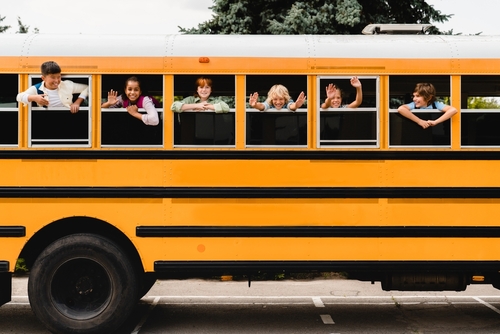
Mornings for many students in the US begin with the familiar hum of the yellow bus pulling up to the curb near their homes.
This sunshine-colored shuttle isn’t just something you see in the movies—the bright yellow school bus is a real-life staple of American childhood. Every weekday morning, more than 25 million students in the US ride these buses to school.
The bold color, officially called “National School Bus Glossy Yellow,” was chosen back in the 1930s because of its high visibility, helping to make sure other drivers on the road could spot the bus from a distance in early morning and late afternoon light.
Yellow school buses are also equipped with stop-sign arms, flashing lights, and other features that signal to other drivers when students are getting on and off.
Riding tuk-tuks in Thailand
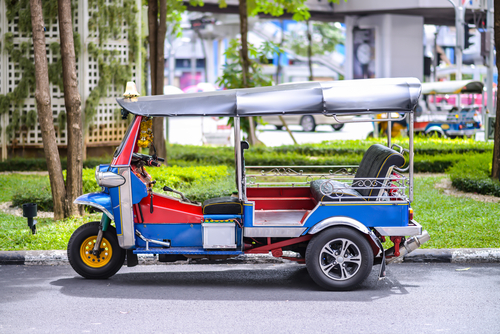
From bustling cities like Bangkok to laid-back islands like Koh Lanta, it’s not unusual to find students across Thailand piling into colorful tuk-tuks— three-wheeled motorized rickshaws— to get to and from school every day. While bicycles, motorbikes and buses are more common for daily commutes, you’ll still see children hopping into tuk-tuks to get to class.
Most tuk-tuks can transport a few children at a time, but it’s not unusual to see a group packed in with their school bags perched on their laps. The tuk-tuk’s compact size means that they’re able to weave through traffic, making them a great option for short school runs in urban neighborhoods. Plus, the open-air can give kids the opportunity to chat with others passing by or simply sit quietly and take in the scenery.
Cycling in the Netherlands
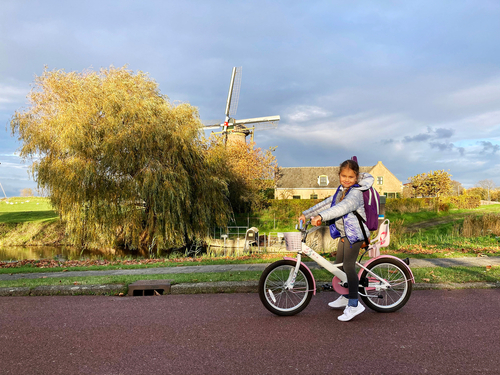
The Dutch are famous for their love of the humble bicycle. Almost 75% of school-aged children in the Netherlands cycle to school, with unsupervised trips typically beginning around the age of eight.
Safety comes first, of course. Kids are taught the rules of the cycling path early in life and take the Verkeersexamen (traffic exam) as part of their school curriculum between the ages of 10 and 12.
The test has a practical and theoretical section, both of which evaluate their awareness of traffic rules and etiquette as well as their ability to navigate roads safely. Those who pass receive a Verkeersdiploma, which shows that they’re officially able to take to the roads independently.
Cycling in the Netherlands is more than just a way for kids to get to school; it’s an activity that helps them to build the confidence and independence that shape their school lives and beyond.
Train rides in India
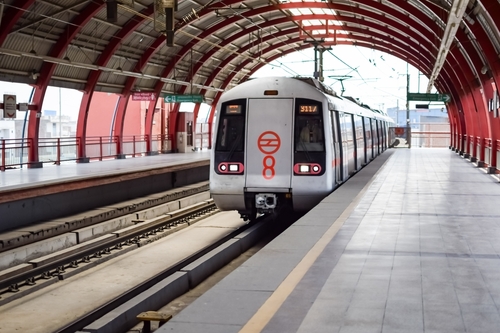
In some of India’s biggest cities, jostling through tight crowds to board busy trains is a daily occurrence for students getting to school.
Particularly in busy suburban areas, children often board early-morning trains to make their journey. Train compartments are often packed with people getting where they need to be, so these kids need to be both resilient and patient.
Despite the high demand on the train lines, the Indian government places a priority on getting learners to school. Indian Railways, the state-run transport authority, offers students various concessions on student season tickets to make rail travel more affordable and encourage regular school attendance.
Ferries in Indonesia
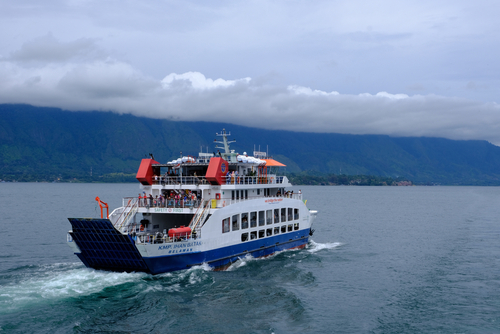
Some children in the Indonesian archipelago don’t start the school day with a ride on a bus or a walk down the road, but with a boat ride.
In more remote areas like Pulau Manda in East Nusa Tenggara, students pile onto wooden ferries and roofless fishing boats, sometimes sailing up to half an hour to reach their classrooms on neighboring islands.
The journey can be challenging, with rainstorms and choppy seas adding an element of unpredictability to the trip. But these commutes are essential for communities that are separated by water.
Fortunately, there are initiatives from the Indonesian government and NGOs that are bringing sturdier school boats equipped with roofs and safety equipment to give students a safer passage to the classroom.
Snowmobiles in the Arctic Circle
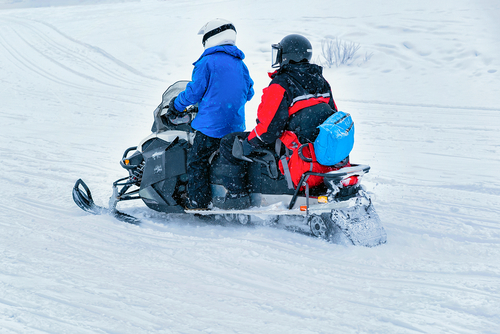
In the Arctic Circle, schoolchildren in some very remote communities rely on snowmobiles to traverse deep snow and frozen tundra on their way to school during the long winter months.
Winter in the Arctic is extreme: Temperatures often plunge below –4°F and daylight lasts for just a few hours—or even minutes during polar night. That means kids have to get dressed up in heavy-duty gear, including insulated overalls, boots, gloves, and balaclavas, to protect them against the extreme cold.
While this might seem unusual to many of us, it’s a normal way for kids in isolated communities to get to school. For example, in Svalbard, Norway, three times more snowmobiles are registered to individuals than cars.
Cable cars in China
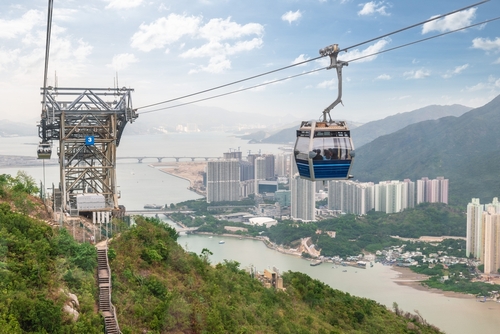
In China’s Yunnan Province, children now get to school via a cable car and cliffside elevator. This commute, with stunning views, dramatically shortens their journey.
Before the aerial gondolas were in place, students from the remote Nizhuhe village had to endure a gruelling three- to four-hour climb along steep cliffs to get to and from Guanzhai Primary School, perched at a dizzying 1,650 meters.
Now, thanks to the transformative infrastructure, the commute has become a simple 30-minute ride. Children board a cliff-side elevator that ascends 268 meters before gliding across the canyon in modern cable cars. Then it’s just a short shuttle to school.
This aerial school bus dramatically decreases the time and effort it takes to get to the classroom, helping to ensure that education remains in reach in this remote area.
The benefits of unique school commutes
While some of these ways of getting to school might seem unusual to children used to more typical commutes like walking, cycling, or taking public transport, more active and unconventional commutes can bring benefits that go far beyond simply getting from A to B.
- Being physically active: Walking or cycling to the bus stop or even all the way to school can help children stay active, boosting fitness, improving mental health, and lowering the risk of childhood obesity.
- Building independence: Managing the commute safely teaches kids responsibility and time management, plus it can build confidence that carries over into other parts of their lives.
- Sharpening problem-solving skills: Navigating transport routes, reading timetables, and adjusting their course when things don’t go as planned can make kids more adaptable and strengthen their critical thinking.
- Becoming more social: From cycling with friends to meeting other students on buses or trains, commuting can provide opportunities for valuable peer interactions and social growth.
- Supporting sustainability: Fewer car rides mean a smaller carbon footprint, helping children to grow their sense of responsibility toward the environment.
Ensuring kids around the world get to school safely
Letting children travel to school without direct supervision can feel like a big step, but with the right preparation, it can also be a positive step toward independence.
According to the American Academy of Pediatrics, kids between the ages of 10 and 12 may typically be ready to start commuting alone. That said, exactly when your child is ready will depend on their maturity levels, the conditions where you live, and how far they have to travel to get to school.
- Before you let them set out on their own—especially if you’re parenting abroad—make sure that your child is comfortable with the route they’ll have to take. Walk or cycle it together several times before they go alone, pointing out landmarks, safe crossing points, and any potential hazards.
- Teach your child the rules of the road, including how to follow traffic signals and use pedestrian crossings. If they’re using public transport, make sure they know how to read a timetable, keep their belongings close, and what to do if they miss a stop.
- Safety also relates to other people on the roads or modes of transport children use. Teach them not to accept rides or gifts from strangers, to avoid secluded areas, and to travel with friends whenever they can.
- Last but not least, give your kids the tools they need to travel safely. Providing your child with a fully charged cellphone with emergency contacts saved and clear rules for checking in with you when they arrive at their destination can do wonders to minimize any worries you have about them traveling alone.
The many routes to learning
From yellow buses in the US to ferries in Indonesia and cliffside elevators in China, the ways children get to school are as varied as the landscapes they live in. Each commute reflects the cultural, geographical, and economic realities that shape daily life for children who are determined to make the journey to learning.
While the methods to get to school may differ, what connects these children is the same determination to learn. For those that face more challenging commutes, it’s about adaptability, resilience, and independence—skills that not only help them in school, but also prepare them for the challenges ahead.
FAQs
What are some of the most unique ways kids travel to school?
Kids in certain regions around the world get to school using tuk-tuks, ferries, trains, yellow buses, bicycles, and snowmobiles. How they travel depends largely on where they live and the infrastructure they have access to.
What challenges do children face on their school commutes?
Many children have to endure long and physically demanding commutes, from walking long distances, to navigating unsafe roads and crowded transportation, as well as dealing with extreme weather conditions. These journeys can sometimes be challenging.
How are communities improving school commutes for children?
Local governments and non-governmental organizations (NGOs) in many places where children take unique school commutes are stepping up to improve road safety, provide buses or bicycles, and offer free or subsidized transportation options in remote areas.